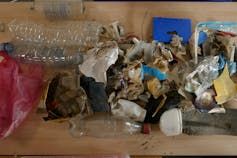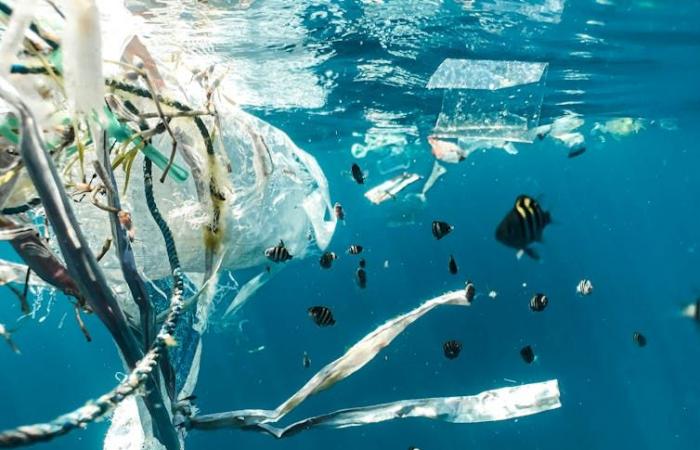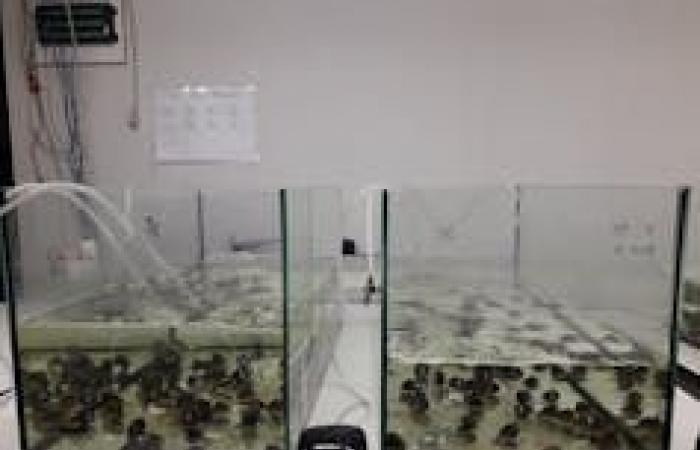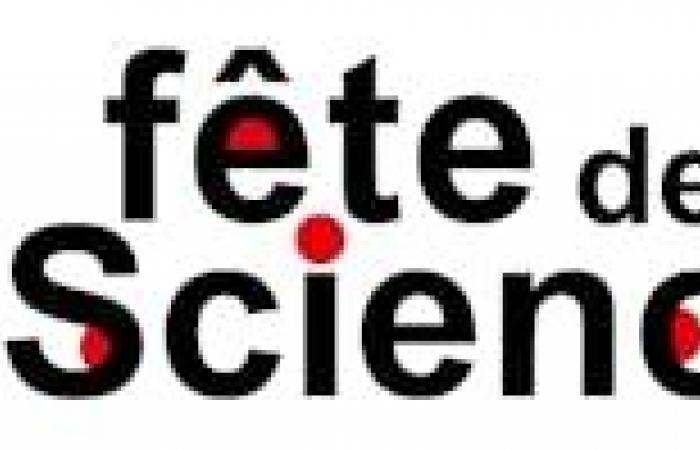The accumulation of nano and microplastics in marine organisms, particularly fish, accumulates throughout the food chain. At the end of this, it is also reflected in our plates. With what health dangers?
It’s no secret. When we enjoy an excellent piece of fish or a seafood platter, we not only provide our body with valuable omega-3 and vitamin D. At the same time, we also ingest substances that are much less suitable for human consumption: a multitude of micro- and nanoplastics.
Amélie Châtel, Provided by the author
Through our waste, these plastic particles less than 5 millimeters in size invade our oceans and enter the food chain. An Ifremer study estimated the number of microplastics floating on the surface of the oceans at 24,400 billion. All marine organisms contain microplastics, from microalgae to higher links in the food chain like fish. A phenomenon that threatens not only marine ecosystems but perhaps also our human health.
What exactly do we know about the accumulation of these pollutants in marine organisms and the risks they represent for humans?
Naja Bertolt Jensen/Unsplash, CC BY-NC-SA
Micro and nanoplastics, an invisible threat
Since the 1950s, plastic production has grown exponentially (58 million tonnes in Europe in 2022), generating significant quantities of waste.
Under the effect of wind, waves, sun, microorganisms, this waste fragments into microplastics (size between 1 and 5 mm) or even nanoplastics (size less than 100 nm), which we find today in all environmental compartments (air, soil, water).
[Déjà plus de 120 000 abonnements aux newsletters The Conversation. Et vous ? Abonnez-vous aujourd’hui pour mieux comprendre les grands enjeux du monde.]
The process by which substances, such as plastics, accumulate in and interact with organisms at different trophic levels is called “bioaccumulation”.

Alice Vidal, Provided by the author
The scientific work that we have carried out in the laboratory reveals that in the aquatic case, micro- and nanoplastics are ingested by a wide variety of species, from microalgae, at the base of the food chain, to higher predators such as eels.
The health of threatened marine fauna
These ingestions are not without consequences. Research reveals that microplastics can cause toxic effects in marine animals.
Not only do they block the digestive systems of marine mussels, but micro- and nanoplastics also activate their immune systems, cause DNA breaks or even affect the expression of a large number of genes involved in many essential cellular functions. for organizations.
These effects are dependent on numerous parameters specific to plastics such as their size, their composition, their state of aging, but also their possible content of dangerous chemical additives.
For example, plastics sometimes contain significant quantities of phthalates, particularly considered endocrine disruptors, which as a reminder are compounds likely to interact with the hormonal system.
Human health toxicity
However, plastics accumulated in marine wildlife inevitably end up in our food chain.

Amélie Châtel, Provided by the author
It is estimated that regular seafood consumers ingest several thousand microplastic particles each year. Research into the exact risks to human health is still ongoing, but several concerning hypotheses are emerging.
Once ingested by humans, microorganisms entering the body potentially cause damage similar to that observed in fish, since the molecules are identical.
Currently, research on human cells has highlighted an effect of micro- and nanoplastics on the same cellular functions as those mentioned in marine organisms. Scientists are again particularly concerned about the toxic impacts of plastic additives.
Furthermore, micro- and nanoplastics also pose a problem due to their ability to transport pathogens or bacteria through the environment and potentially into our bodies – perhaps presenting an additional risk of causing infectious diseases to emerge.
It therefore appears urgent to tackle bioaccumulation in the food chain: by acting quickly to limit the use of plastic upstream and improve recycling techniques downstream, this progression could be slowed down.

This article is published as part of the Science Festival (which takes place from October 4 to 14, 2024), and of which The Conversation France is a partner. This new edition focuses on the theme “ocean of knowledge”. Find all the events in your region on the Fetedelascience.fr website.










